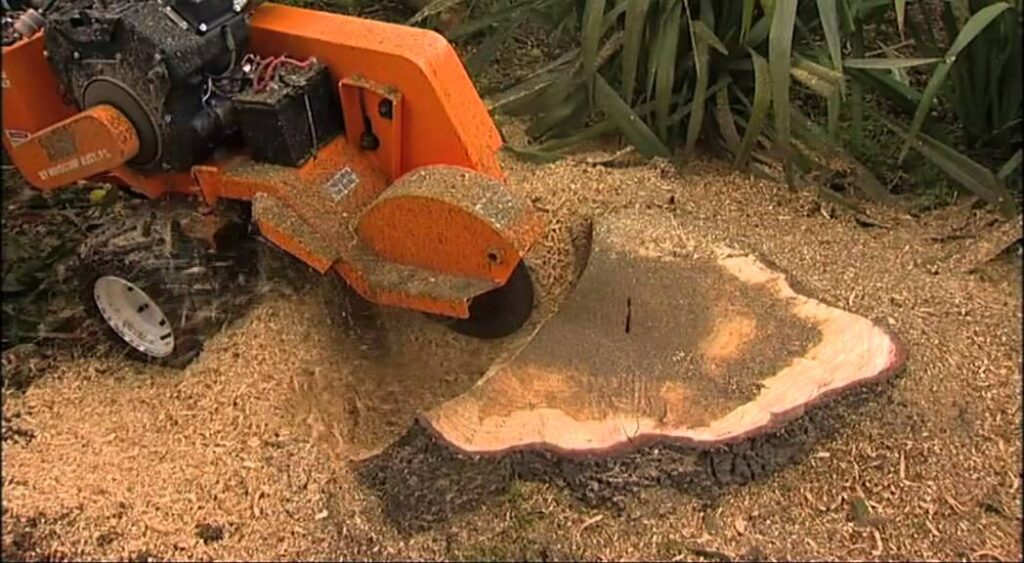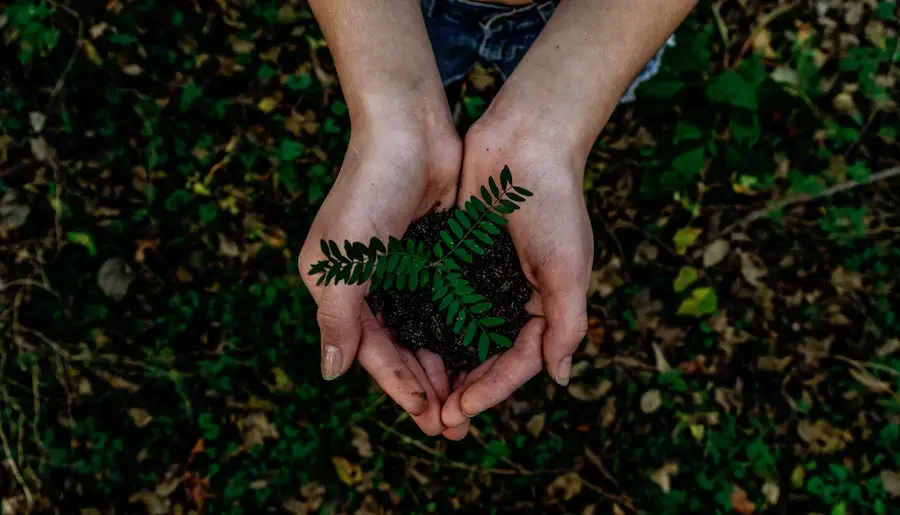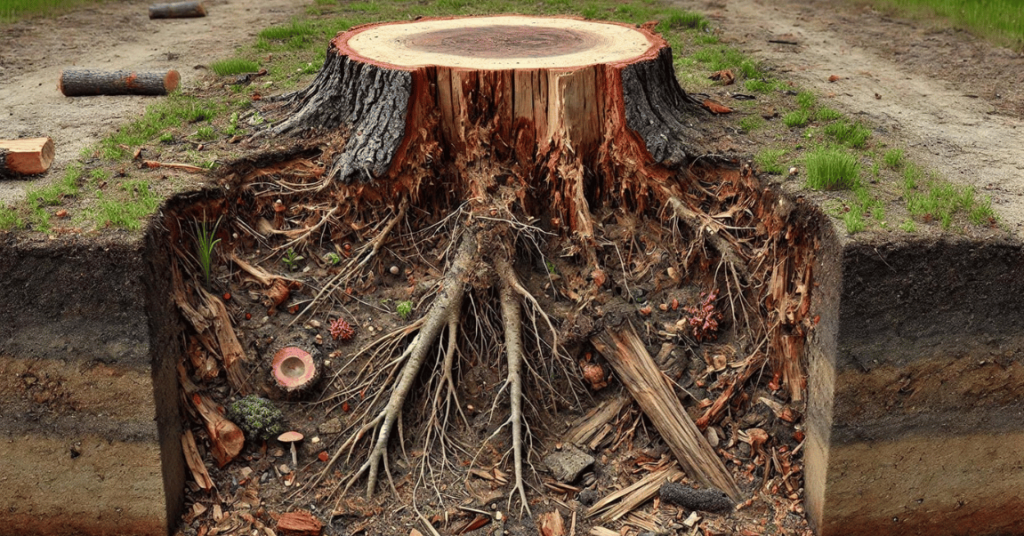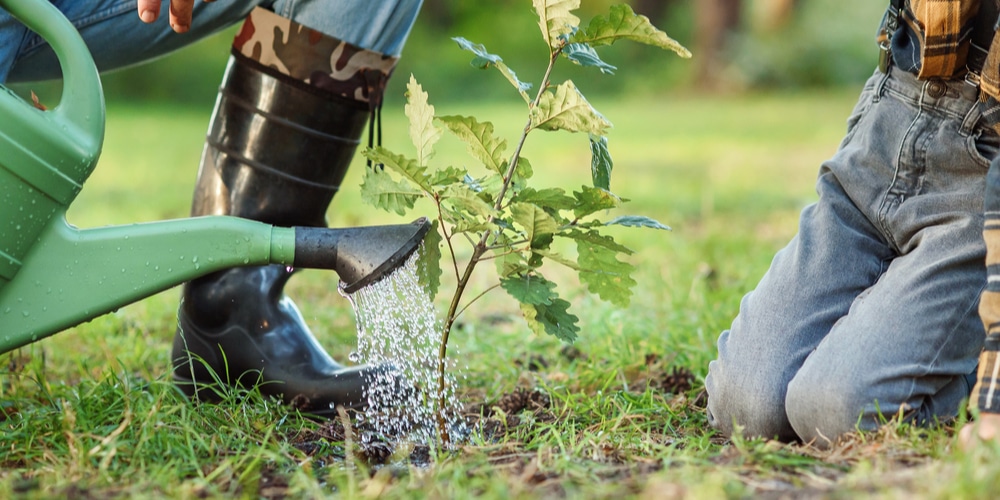Stump grinding is a popular method for removing tree stumps from your yard, but it often leaves homeowners wondering how soon they can start planting new trees or plants in the same area. While stump grinding eliminates the visible stump, the process can affect the soil and surrounding area, making timing crucial for planting. Understanding the right time to plant after stump grinding ensures healthy growth and helps avoid potential setbacks.
In this article, we’ll answer the key question: how soon after stump grinding can you plant? We’ll also share tips and insights to help you successfully plant in a recently ground area, ensuring your garden flourishes.
What is Stump Grinding?

Table of Contents
Stump grinding is the process of using a specialized machine to grind down the leftover tree stump to below the surface of the ground. This process helps eliminate the stump’s visible remnants and promotes smoother, more even ground. However, the grinding process can leave behind wood chips and roots in the soil, and these materials need to break down before planting anything in the area.
Stump grinding is often preferred over stump removal because it is less invasive, requires less digging, and doesn’t disrupt surrounding landscaping as much. However, while it leaves the ground less cluttered, it still has implications for plant growth due to changes in the soil’s structure.
Why Timing Matters After Stump Grinding
The timing of planting after stump grinding is important because the grinding process alters the soil in a few ways. Here’s why waiting is essential:
- Wood Debris in the Soil: After grinding, wood chips and leftover tree roots remain in the soil. These organic materials need time to decompose. If you plant too soon, the decomposition process can consume nutrients in the soil, which may hinder your plant’s growth.
- Soil Compaction: The grinding equipment can cause compaction of the surrounding soil. This makes it harder for new roots to establish themselves, as compacted soil can restrict water and nutrient absorption.
- Tree Root Residue: Old roots from the removed tree can still be present underground, competing with new plants for nutrients. The soil’s ecosystem needs time to recover.
Waiting gives the soil time to recover, ensuring it is nutrient-rich and properly aerated for planting.
How Soon Can You Plant After Stump Grinding?
In general, it’s advisable to wait between 3 to 6 months after stump grinding before planting. However, this can vary depending on several factors:
- Size of the Stump: Larger stumps leave behind more debris and roots, which may take longer to decompose.
- Type of Soil: Soil that drains well and is rich in organic matter may recover faster than heavy, clay-based soils.
- Climate: In warmer climates, decomposition may occur more quickly, allowing for earlier planting. Cooler climates may require a longer wait.
To determine the right time for planting, consider checking the condition of the soil. If it feels loose and has no remaining wood debris, it may be ready for planting sooner. If the soil is still compact or feels full of wood chips, it’s best to wait longer.
Tips for Successful Planting After Stump Grinding

Once the right amount of time has passed, it’s important to follow some key steps to ensure successful planting. Here are a few tips to help:
- Prepare the Soil Properly: Before planting, break up any compacted soil. You can use a garden fork or shovel to loosen the soil, ensuring roots can easily grow. Consider mixing in compost or other organic matter to help enrich the soil.
- Remove Debris: Check the area for remaining wood chips, roots, or debris. Removing these will give your new plants the best chance to thrive without competition for nutrients.
- Choose Plants Wisely: Select plants that are well-suited for the type of soil in the area. Some plants might be more tolerant of slightly acidic or nutrient-poor soil, which may be common after stump grinding.
- Water Well: Newly planted trees or shrubs will need consistent moisture to establish strong roots. Be sure to water them regularly, especially during dry spells.
- Mulch Around Plants: Adding mulch helps retain moisture in the soil and keeps weeds from sprouting. This can be particularly helpful as the soil continues to break down and improve.
Signs the Soil is Ready for Planting
It’s not always easy to tell when the soil is ready for planting. Here are some signs that it’s the right time to plant:
- Soil Structure: If the soil feels loose and crumbly rather than compact or sticky, it’s a good sign the soil is recovering and ready for planting.
- Decomposing Organic Matter: If the wood chips have broken down into fine, earthy material, the soil is ready to support new plant life.
- No Visible Wood Debris: If you can no longer see chunks of wood or roots in the soil, it means the decomposition process is well underway.
If you’re unsure, a soil test can help you assess the nutrient levels and pH, which will guide your planting decisions.
What to Do if You Need to Plant Sooner?
In some cases, you may need to plant before the recommended 3 to 6 months. Here are a few strategies to consider:
- Soil Amendments: If the soil still contains wood chips or is overly compact, consider adding compost or organic matter to enrich the soil. This can help speed up the recovery process and make it more conducive for planting.
- Raised Beds: If you’re concerned about soil health, consider planting in raised beds. This allows you to control the soil conditions and avoid any issues with leftover debris or soil compaction.
- Wait a Few Weeks: If you’re in a rush, it’s better to wait just a few more weeks rather than planting immediately. Small improvements in soil structure can make a significant difference.
How Stump Grinding Affects Soil Health

Stump grinding can have both positive and negative effects on soil health:
- Positive Effects: The process helps reduce the presence of decaying stumps, which could harbor pests or diseases. It also creates space for new plants to be introduced to the area.
- Negative Effects: The decomposition of wood chips can temporarily strip the soil of essential nutrients, and the ground may be uneven or compacted due to the grinding process. Waiting a few months allows these issues to resolve and the soil to rejuvenate.
Conclusion
Planting after stump grinding is possible, but it requires patience. By waiting 3 to 6 months, preparing the soil properly, and choosing the right plants, you can ensure a successful planting process. Remember, the key to successful planting is giving the soil enough time to recover from the stump grinding process and to provide your new plants with the best possible environment for growth.
For more gardening tips and expert advice, visit Garden Loom. Happy planting!








